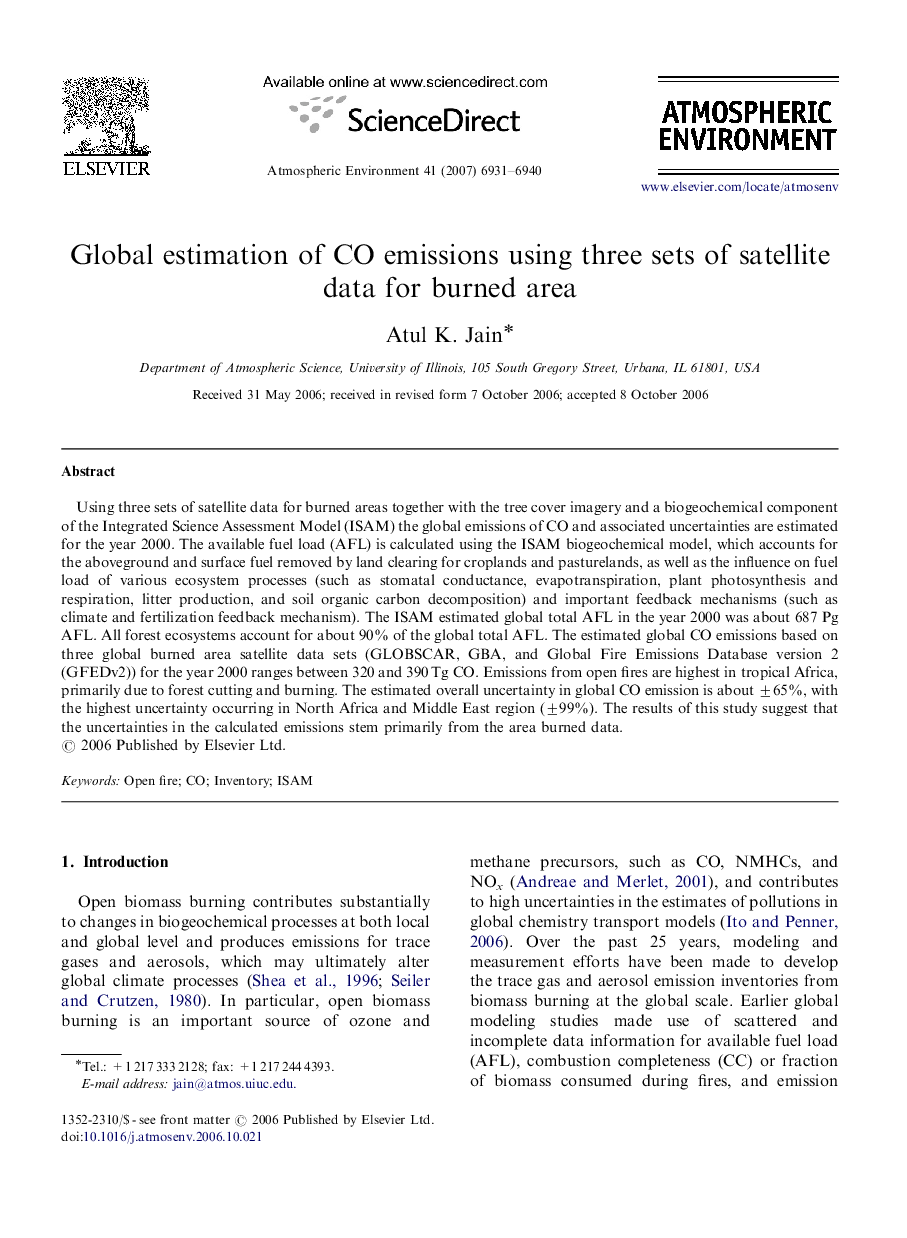| Article ID | Journal | Published Year | Pages | File Type |
|---|---|---|---|---|
| 4443374 | Atmospheric Environment | 2007 | 10 Pages |
Using three sets of satellite data for burned areas together with the tree cover imagery and a biogeochemical component of the Integrated Science Assessment Model (ISAM) the global emissions of CO and associated uncertainties are estimated for the year 2000. The available fuel load (AFL) is calculated using the ISAM biogeochemical model, which accounts for the aboveground and surface fuel removed by land clearing for croplands and pasturelands, as well as the influence on fuel load of various ecosystem processes (such as stomatal conductance, evapotranspiration, plant photosynthesis and respiration, litter production, and soil organic carbon decomposition) and important feedback mechanisms (such as climate and fertilization feedback mechanism). The ISAM estimated global total AFL in the year 2000 was about 687 Pg AFL. All forest ecosystems account for about 90% of the global total AFL. The estimated global CO emissions based on three global burned area satellite data sets (GLOBSCAR, GBA, and Global Fire Emissions Database version 2 (GFEDv2)) for the year 2000 ranges between 320 and 390 Tg CO. Emissions from open fires are highest in tropical Africa, primarily due to forest cutting and burning. The estimated overall uncertainty in global CO emission is about ±65%, with the highest uncertainty occurring in North Africa and Middle East region (±99%). The results of this study suggest that the uncertainties in the calculated emissions stem primarily from the area burned data.
